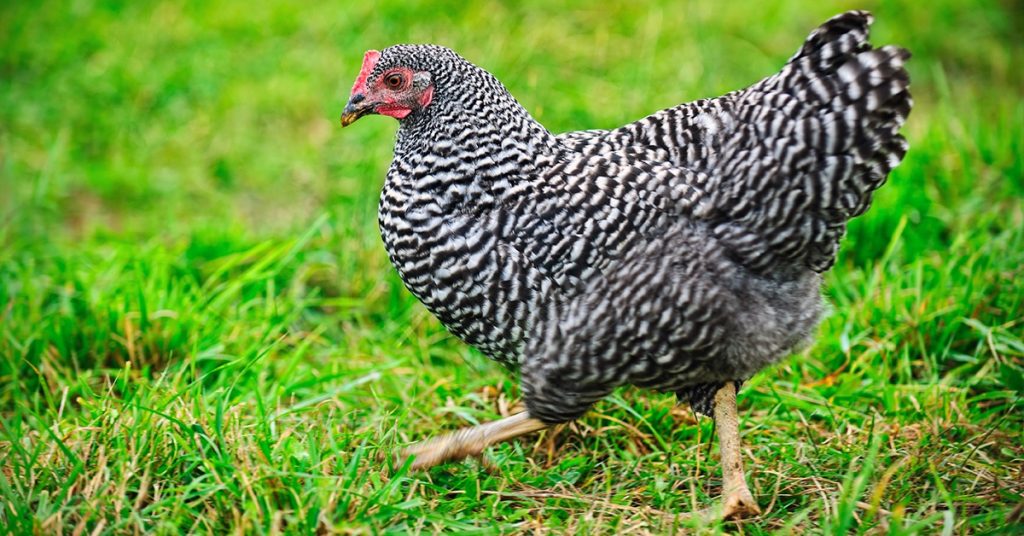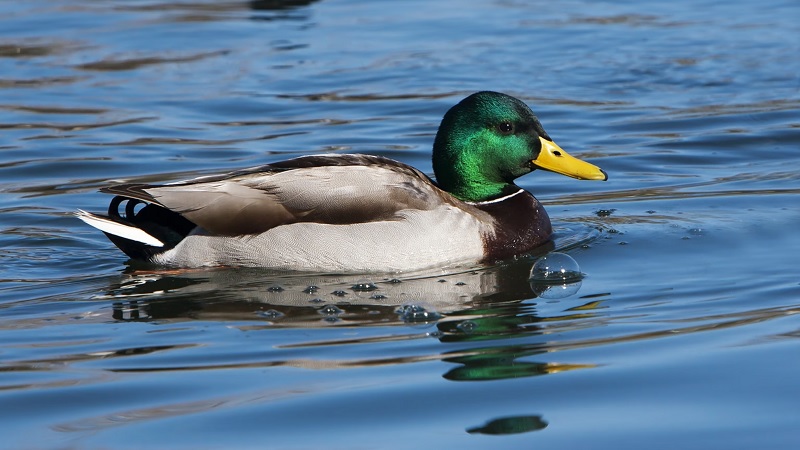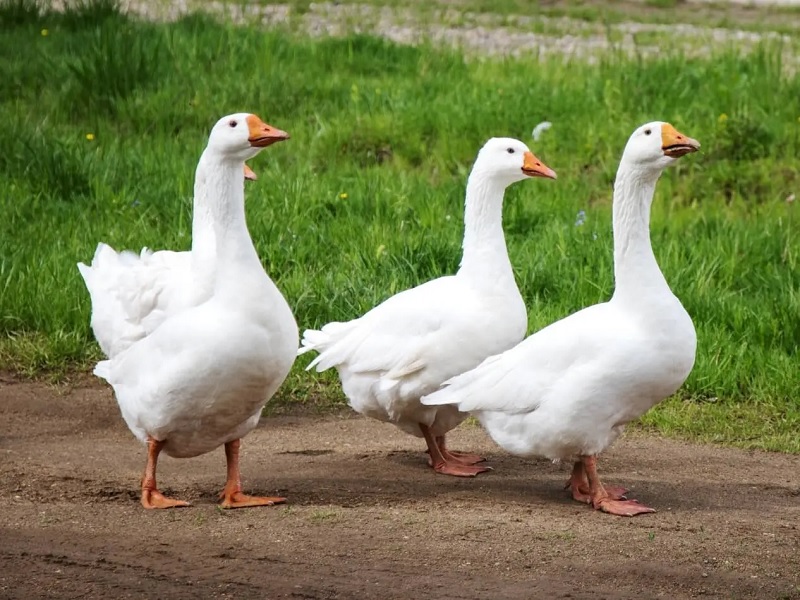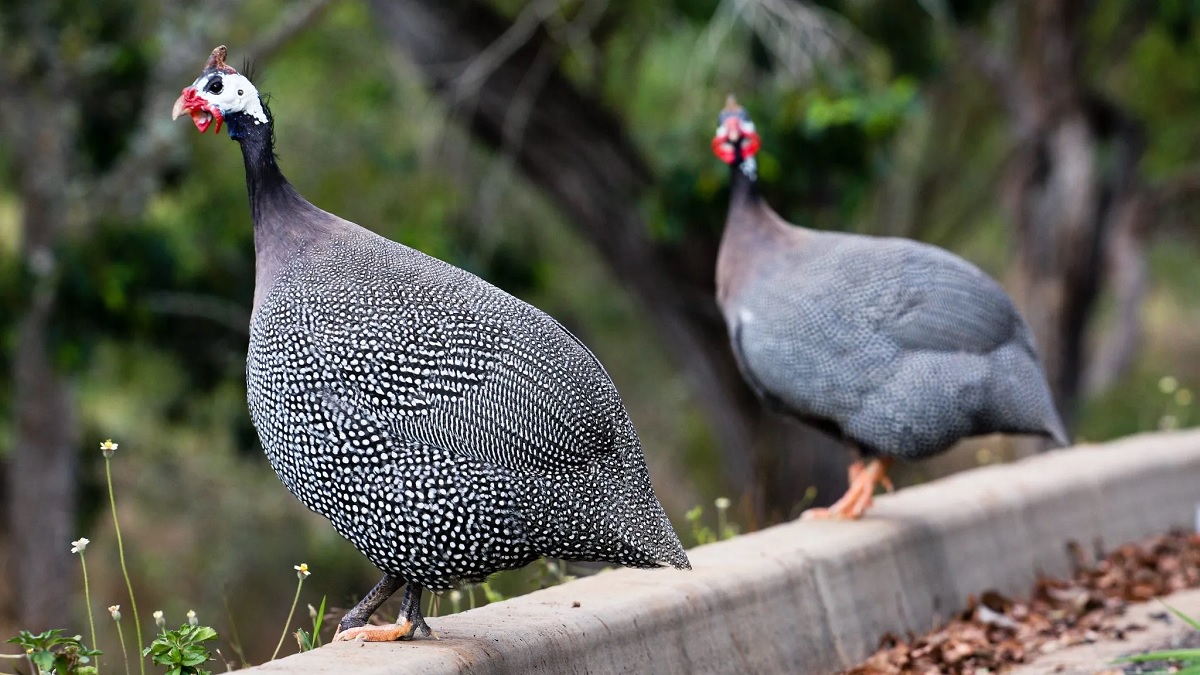Domestic birds have been an integral part of human life for centuries, serving as companions, sources of food, and even as symbols in cultural practices. When exploring the topic of types of domestic birds, you quickly discover the incredible variety available, ranging from chickens and ducks to pigeons and parrots. Each species has its own unique traits, behaviors, and care requirements, making them suitable for different purposes and lifestyles.
Understanding the different types of domestic birds not only helps in choosing the right species for your home or farm but also provides insight into their biology and natural instincts. Some are valued for their eggs or meat, while others are cherished for their beauty, song, or intelligence. Learning about these birds enriches your knowledge of animal care and highlights the diversity of species humans have successfully domesticated over time.
Chickens
Chickens are among the most common and well-known domestic birds worldwide. They have been domesticated for thousands of years for their eggs, meat, and sometimes as pets. Their adaptability, social behavior, and easy care make them ideal for small farms and backyard setups, while their fascinating behaviors and physical traits continue to draw interest from bird enthusiasts and researchers alike.

Appearance and Physical Traits
Chickens have a sturdy body, feathered wings, and a distinctive comb on their heads. Their feathers come in a variety of colors and patterns depending on the breed. They have strong legs with claws for scratching the ground in search of food. Their beaks are short and curved, perfect for pecking at seeds, insects, and grains. Roosters are typically larger and more colorful than hens, displaying vibrant plumage and prominent combs as part of their mating behavior.
Behavior and Social Structure
Chickens are highly social animals that live in groups called flocks. Within a flock, they establish a hierarchy known as the pecking order, which determines access to food, water, and resting spots. Hens often communicate through soft clucks, while roosters use louder crowing to mark territory or warn of danger. They also display brooding behavior, with hens sitting on eggs to incubate them. Chickens are curious and active, spending much of their day foraging, scratching, and dust bathing to maintain hygiene and health.
Uses and Importance
Chickens are valuable for both food and economic purposes. They provide eggs, which are a key source of protein, and their meat is widely consumed globally. Some breeds are raised for ornamental purposes due to their colorful feathers and striking appearance. Chickens also play a role in agriculture by controlling pests, as they consume insects and larvae while scratching the soil. Their presence in backyards and farms adds to sustainability, education, and enjoyment for those caring for them.
Breeds and Varieties
There are hundreds of chicken breeds worldwide, each with distinct characteristics. Some popular egg-laying breeds include Leghorns and Rhode Island Reds, while meat-focused breeds include Cornish Cross and Plymouth Rock. Ornamental breeds, such as Silkies and Polish chickens, are prized for their unique feather patterns and appearance. Understanding the differences between breeds helps you choose the right chicken for your needs, whether for egg production, meat, or as a pet. Breed selection impacts behavior, care requirements, and overall productivity.
Ducks
Ducks are popular domestic birds known for their adaptability, calm nature, and water-loving habits. They are raised for eggs, meat, and ornamental purposes, and their presence on farms or in backyard ponds adds diversity to domestic bird collections. Ducks exhibit unique behaviors and physical traits that set them apart from other poultry, making them both practical and fascinating to observe.

Appearance and Physical Traits
Ducks have broad, flat bills designed for filtering food from water and a waterproof layer of feathers that keeps them dry while swimming. Their webbed feet make them excellent swimmers, allowing easy movement in ponds and shallow water. Ducks vary in size, color, and feather patterns depending on the breed, with males often displaying more vibrant plumage. Their bodies are typically rounded and robust, supporting both swimming and short-distance walking, while their wings enable limited flight for some breeds.
Behavior and Social Structure
Ducks are social birds that thrive in groups, often forming strong flock bonds. They communicate through quacks, whistles, and soft calls to coordinate activities, signal danger, or locate mates. Ducks spend a significant portion of their day foraging for grains, insects, and aquatic plants, both on land and in water. They also enjoy preening to maintain feather health and engage in dabbling or diving depending on the breed. Their calm temperament and cooperative behavior make them easy to manage in domestic settings.
Uses and Importance
Ducks are valued for their eggs, meat, and feathers, making them economically significant in many regions. Duck eggs are larger and richer than chicken eggs, while their meat is a staple in various cuisines. Some breeds provide ornamental appeal due to striking plumage or unique patterns, adding aesthetic value to ponds and farms. Additionally, ducks contribute to pest control by eating insects and larvae. Their presence enhances sustainability in backyard or small-scale farming setups, offering both utility and enjoyment.
Breeds and Varieties
There are many domestic duck breeds, each with specific characteristics and purposes. Popular egg-laying breeds include Khaki Campbell and Indian Runner, while Pekin and Muscovy ducks are raised primarily for meat. Ornamental breeds, such as Call Ducks or Swedish Ducks, are prized for their colorful plumage and unique appearances. Choosing the right breed depends on your needs, whether for egg production, meat, or decorative purposes, and influences behavior, care requirements, and overall contribution to your flock.
Geese
Geese are large domestic birds known for their intelligence, strong social bonds, and protective nature. They are often raised for meat, eggs, feathers, and as natural guards on farms. Their distinctive honking calls and migratory instincts make them fascinating to observe. Geese adapt well to both land and water environments, adding diversity and functionality to domestic bird flocks.

Appearance and Physical Traits
Geese have long necks, strong bodies, and webbed feet designed for swimming and walking on various terrains. Their feathers are dense and waterproof, helping them stay warm and dry in water. They vary in color, from white and gray to brown, depending on the breed. Geese also possess strong bills that allow them to graze on grass and aquatic plants. Males, known as ganders, are typically larger than females, and both display graceful movements in water and on land.
Behavior and Social Structure
Geese are highly social birds that live in family groups or flocks. They communicate through loud honks and other vocalizations to alert each other of danger or maintain group cohesion. Geese are known for their strong pair bonds, often mating for life, and display protective behavior toward their young and territory. They are also highly intelligent, capable of recognizing humans and other animals, and they exhibit migratory instincts, traveling in coordinated formations when released or in natural settings.
Uses and Importance
Geese are valued for multiple purposes, including meat, eggs, feathers, and down for bedding. Their grazing habits help manage grasslands, reducing weeds and maintaining pasture health. Geese are often used as natural alarm systems on farms because of their loud vocalizations when strangers or predators approach. Ornamental geese, with striking plumage, also enhance the aesthetic appeal of ponds and gardens. Their versatility makes them practical, economically beneficial, and enjoyable additions to domestic bird collections.
Breeds and Varieties
Domestic geese come in a variety of breeds, each suited to specific purposes. Common meat breeds include Embden and Toulouse, known for their large size and tender meat. For egg production, African and Chinese geese are often preferred due to their consistent laying. Ornamental breeds like the Pilgrim or Sebastopol are prized for unique feather patterns and appearance. Selecting the right breed depends on your goals, whether for utility, aesthetics, or both, and ensures proper care and management for a thriving flock.
Turkeys
Turkeys are large domestic birds native to North America, widely recognized for their role in food production and cultural significance. They are raised for meat, feathers, and sometimes as ornamental birds. Turkeys are social, intelligent, and exhibit unique behaviors, making them fascinating to observe. Their size, distinctive plumage, and striking features set them apart from other domestic birds.
Appearance and Physical Traits
Turkeys are known for their robust bodies, long necks, and broad wings. Their feathers vary in color from dark brown and bronze to iridescent shades, with males, called toms, displaying more vibrant plumage than females. They have strong legs for walking and scratching, along with a bare head and wattles that can change color during displays or excitement. Turkeys also possess a unique snood, a fleshy extension above the beak, which is a key feature in mating displays. Their size and physical traits make them easily distinguishable from chickens, ducks, or geese.
Behavior and Social Structure
Turkeys are social birds that often form flocks, especially during foraging or migration periods. They communicate using a range of vocalizations, including gobbles, clucks, and purrs, which serve to signal danger, attract mates, or maintain flock cohesion. Males are particularly territorial during mating season, performing elaborate displays with fanned tails, puffed feathers, and snood movements to attract females. Turkeys are intelligent and curious, exploring their environment for food, nesting sites, and safety. They demonstrate protective behavior toward young turkeys and are capable of remembering locations, patterns, and even recognizing humans.
Uses and Importance
Turkeys are primarily raised for their meat, which is a staple in many cuisines worldwide. Their feathers are also used for decorative purposes, crafts, and traditional clothing in some cultures. Additionally, turkeys contribute to sustainable farming by controlling insects and foraging for grains, which helps maintain healthy soil and reduce pests. Ornamental turkeys, bred for their striking appearance, add aesthetic value to farms and gardens. Their social and intelligent nature makes them not only productive but also interesting and enjoyable birds to raise.
Breeds and Varieties
There are several domestic turkey breeds, each suited for specific purposes. Broad Breasted White turkeys are popular for meat production due to their large size and fast growth. Heritage breeds, such as Bourbon Red and Narragansett, are valued for their flavor, hardiness, and natural behaviors. Some ornamental breeds, like the Royal Palm turkey, are raised for their striking appearance and unique plumage patterns. Selecting the right breed depends on your goals, whether for meat, ornamental purposes, or heritage preservation, and ensures proper care and management of your flock.
Pigeons and Doves
Pigeons and doves are closely related domestic birds known for their gentle nature, intelligence, and adaptability. They have been domesticated for thousands of years for purposes like communication, companionship, and ornamental use. Their diversity in color, size, and behavior makes them a popular choice among bird enthusiasts and hobbyists worldwide.
Appearance and Physical Traits
Pigeons and doves are small to medium-sized birds with compact bodies, short necks, and slender bills. Their feathers come in a wide range of colors and patterns, from plain gray or white to iridescent shades of green, purple, and bronze. Both species have strong wings adapted for sustained flight and perching feet suited for various surfaces. Doves typically appear more delicate, while pigeons are slightly larger and more robust. Their eyes are prominent, providing excellent vision, and their lightweight skeletal structure supports their agility in flight. These traits make them highly adaptable to urban and rural environments.
Behavior and Social Structure
Pigeons and doves are social birds that thrive in pairs or flocks. They communicate through cooing, soft calls, and body language to signal alarm, courtship, or location of food. Both species display strong monogamous bonds, often mating for life and raising chicks together. They are highly intelligent and capable of recognizing humans, navigating long distances, and remembering landmarks. Pigeons have historically been used for carrying messages due to their exceptional homing instincts. Their social and cooperative behavior ensures safety in numbers and strengthens bonds within flocks, making them reliable and engaging domestic birds.
Uses and Importance
Pigeons and doves serve multiple purposes, including companionship, ornamental display, and historical communication. Racing pigeons are bred for speed and navigation skills, while show pigeons and decorative doves are prized for their beauty and unique plumage. Both species contribute to ecological balance by consuming seeds and helping disperse plants. In some cultures, they hold symbolic significance, representing peace, love, or spiritual messages. Their manageable size, gentle temperament, and ease of care make them ideal birds for hobbyists, educators, and families seeking to observe or interact with domestic birds closely.
Breeds and Varieties
There are numerous pigeon and dove breeds, each with distinct characteristics. Common pigeon breeds include Homing Pigeons, Racing Homers, and Fantails, while popular doves include Ringneck Doves and Diamond Doves. Breeds vary in size, color, flight ability, and temperament, with some optimized for ornamental purposes and others for racing or homing. Understanding the differences between breeds helps you select the right bird for your needs, whether for companionship, hobby breeding, or competitions. Proper breed selection also influences care routines, social behavior, and overall satisfaction when raising these domestic birds.
Other Domestic Birds
Beyond the well-known domestic birds like chickens, ducks, geese, turkeys, pigeons, and doves, there are many other species that humans have successfully domesticated. These birds are kept for companionship, ornamental purposes, or even for specific agricultural or cultural roles. Exploring other domestic birds highlights the diversity of species humans interact with and the unique traits that make each one valuable.
Parrots and Budgerigars
Parrots and budgerigars are popular domestic birds known for their intelligence, vivid plumage, and ability to mimic sounds. Parrots, including species like African Greys, Macaws, and Cockatoos, are highly social and require mental stimulation to remain healthy and happy. Budgerigars, or budgies, are smaller, more manageable birds with colorful feathers and playful personalities. Both parrots and budgerigars are excellent for companionship, offering interactive behaviors and engaging personalities. They need spacious cages, regular social interaction, and a balanced diet to thrive, making them ideal for bird enthusiasts who enjoy intelligent and social pets.
Canaries and Finches
Canaries and finches are small domestic birds appreciated for their cheerful songs, delicate appearance, and low maintenance. Canaries are especially valued for their melodious singing, often used as natural alarm clocks or for aesthetic enjoyment. Finches, including zebra and society finches, are social, thriving in groups where they can interact and display natural behaviors. These birds are relatively easy to care for, requiring proper cages, clean water, and nutritious seeds. Their small size, gentle temperament, and attractive colors make them suitable for beginners or people seeking ornamental birds to enhance their homes or aviaries.
Quails and Guinea Fowl
Quails and guinea fowl are domesticated for both meat and eggs, as well as for pest control in agricultural settings. Quails are small, hardy birds that produce flavorful eggs and can adapt to confined spaces. Guinea fowl are larger, known for their loud calls and ability to deter predators or pests naturally. Both species require proper housing, protection from extreme weather, and nutritious feed to maintain health and productivity. They are valued in small farms and backyards for their utility, combining agricultural benefits with interesting behaviors and low-maintenance care.
Pheasants and Peafowl
Pheasants and peafowl are primarily kept for ornamental purposes due to their vibrant plumage and striking appearances. Pheasants, including golden and ring-necked varieties, are admired for their colorful feathers and graceful movements. Peafowl, especially peacocks, are prized for their iridescent tail feathers and elaborate mating displays. These birds need spacious enclosures, secure housing, and proper nutrition to thrive. While they are less common for meat or eggs, their visual appeal and unique behaviors make them popular among collectors and enthusiasts looking to add exotic domestic birds to their aviaries.
Other Exotic Domestic Birds
Other exotic domestic birds include species like lovebirds, cockatiels, and parakeets, which are raised primarily for companionship and visual appeal. Lovebirds are small, affectionate, and social, often forming strong bonds with their owners. Cockatiels are known for their crests and gentle temperament, while parakeets are playful and highly interactive. These birds require attention, regular cleaning, and a balanced diet to stay healthy. Their adaptability, intelligence, and vibrant colors make them suitable for domestic settings, providing both enjoyment and companionship for bird lovers who appreciate smaller, interactive domestic species.
Selection Considerations
Choosing the right domestic bird requires careful thought about your goals, environment, and the bird’s specific needs. Selection considerations help ensure that the bird you choose thrives in your care, whether for companionship, ornamental purposes, or food production. Understanding these factors allows you to make informed decisions and maintain a healthy, productive, and happy flock.
Purpose of Keeping Birds
The first consideration is the purpose for which you plan to keep the bird. Some birds, like chickens and ducks, are primarily raised for eggs or meat, while others, such as parrots, finches, or peafowl, are kept for companionship or ornamental value. Understanding your goals helps determine the species and breed that will best meet your needs. Considering the bird’s natural behavior, lifespan, and care requirements ensures that your selection aligns with your expectations, preventing challenges in maintenance or productivity.
Space and Housing
Space and housing are critical factors in bird selection. Birds need adequate room for movement, nesting, and social interaction. Larger birds like geese, turkeys, or peafowl require spacious enclosures, while smaller birds such as canaries, finches, or budgerigars can thrive in cages with sufficient vertical and horizontal space. Proper housing protects birds from predators, extreme weather, and stress. Planning for appropriate space ensures the health and well-being of the birds and supports their natural behaviors, including foraging, flying, and social interaction.
Care and Maintenance
Care and maintenance are key to keeping domestic birds healthy and productive. Consider the dietary needs, grooming requirements, and daily attention each species requires. Some birds, like parrots and budgerigars, need mental stimulation and social interaction, while others, such as quails or pigeons, are lower-maintenance. Regular cleaning of cages, proper nutrition, and access to clean water are essential. Understanding these requirements before selecting a bird ensures you can provide consistent care, leading to a thriving and balanced domestic bird environment.
Frequently Asked Questions
What Are Domestic Birds?
Domestic birds are species that have been tamed and bred by humans for various purposes, including companionship, ornamental use, egg or meat production, and agricultural benefits. You will find domestic birds ranging from chickens and ducks to parrots, pigeons, and ornamental species like peafowl. These birds have adapted to living in controlled environments, making them easier to care for than wild birds while retaining some natural behaviors. Understanding which species are domestic helps you select the right bird for your needs.
What Are the Most Common Types of Domestic Birds?
The most common types of domestic birds include chickens, ducks, geese, turkeys, pigeons, and doves. Chickens are widely kept for eggs and meat, while ducks and geese are valued for both meat and egg production. Turkeys are raised primarily for meat, and pigeons or doves are often kept for ornamental purposes or companionship. Other domestic birds like parrots, budgerigars, canaries, and finches are popular for their intelligence, color, and song. Choosing from these common types depends on your goals and available resources.
How Do Domestic Birds Differ From Wild Birds?
Domestic birds differ from wild birds in behavior, adaptability, and dependency on humans. You will notice that domestic birds are accustomed to living in controlled environments, such as cages, coops, or aviaries. They rely on humans for food, shelter, and protection from predators. In contrast, wild birds must find their own food, migrate, and adapt to natural threats. Domestic birds are often selectively bred for specific traits, like size, egg-laying ability, or plumage, making them more predictable and easier to manage compared to their wild counterparts.
Which Domestic Birds Are Best For Eggs and Meat?
Chickens, ducks, geese, and turkeys are the most suitable domestic birds for egg and meat production. Chickens provide a steady supply of eggs and meat, while ducks and geese offer larger eggs and flavorful meat. Turkeys are primarily raised for meat, especially for festive occasions. You should consider the breed, growth rate, and care requirements when selecting birds for production. Each type has specific nutritional and housing needs to ensure healthy growth and consistent productivity, making your management efforts more efficient.
Can Domestic Birds Be Kept as Pets?
Yes, many domestic birds can be kept as pets. Parrots, budgerigars, canaries, finches, pigeons, and doves are popular choices due to their intelligence, gentle nature, and vibrant plumage. You will need to provide appropriate housing, social interaction, and mental stimulation for pet birds. Understanding the species-specific requirements, such as diet, exercise, and social needs, ensures a happy and healthy bird. Pet birds offer companionship and entertainment while also allowing you to observe fascinating behaviors and vocalizations.
What Factors Should Be Considered When Choosing a Domestic Bird?
When selecting a domestic bird, consider your purpose, available space, time for care, and the bird’s behavior. Chickens and ducks are ideal for eggs and meat, while parrots or canaries are better for companionship or aesthetic purposes. You should also account for climate adaptability, social needs, and maintenance requirements. Proper selection ensures the bird thrives in your environment, maintains good health, and displays natural behaviors. Knowing these factors beforehand helps you make informed choices and reduces challenges in daily care and management.
Final Thoughts
Understanding the variety and characteristics of types of domestic birds allows you to make informed decisions when selecting birds for your home, farm, or aviary. From chickens, ducks, and geese to parrots, pigeons, and finches, each species has unique traits, behaviors, and care requirements that suit different purposes, whether for eggs, meat, companionship, or ornamental value.
Recognizing these differences helps you provide proper housing, nutrition, and attention to ensure the health and well-being of your birds. Exploring the diversity of domestic birds also highlights the adaptability and fascinating behaviors of these species, enriching your experience as a caretaker. By knowing the types of domestic birds and their specific needs, you can enjoy a thriving, productive, and engaging flock that contributes to both practical benefits and personal enjoyment.
